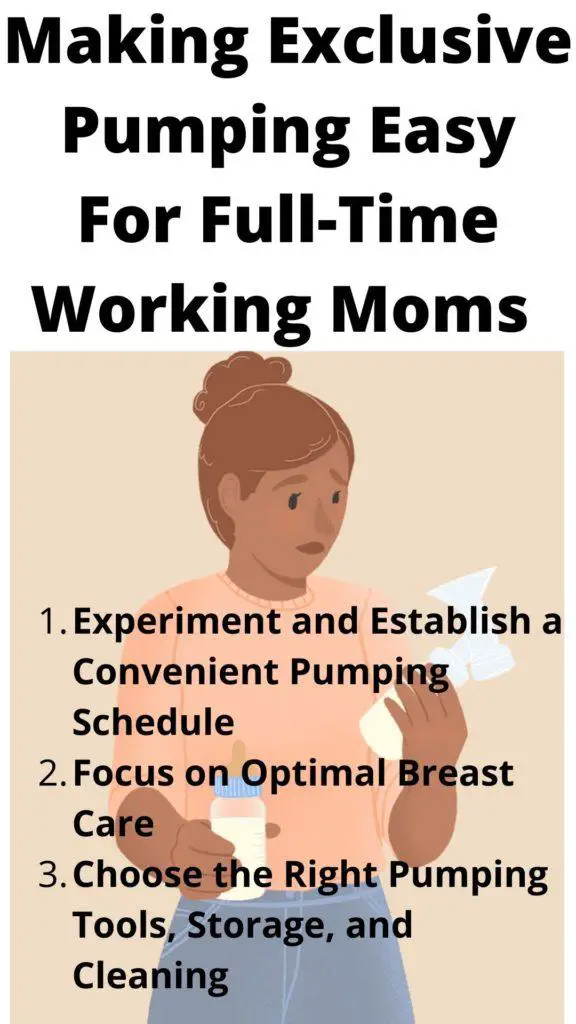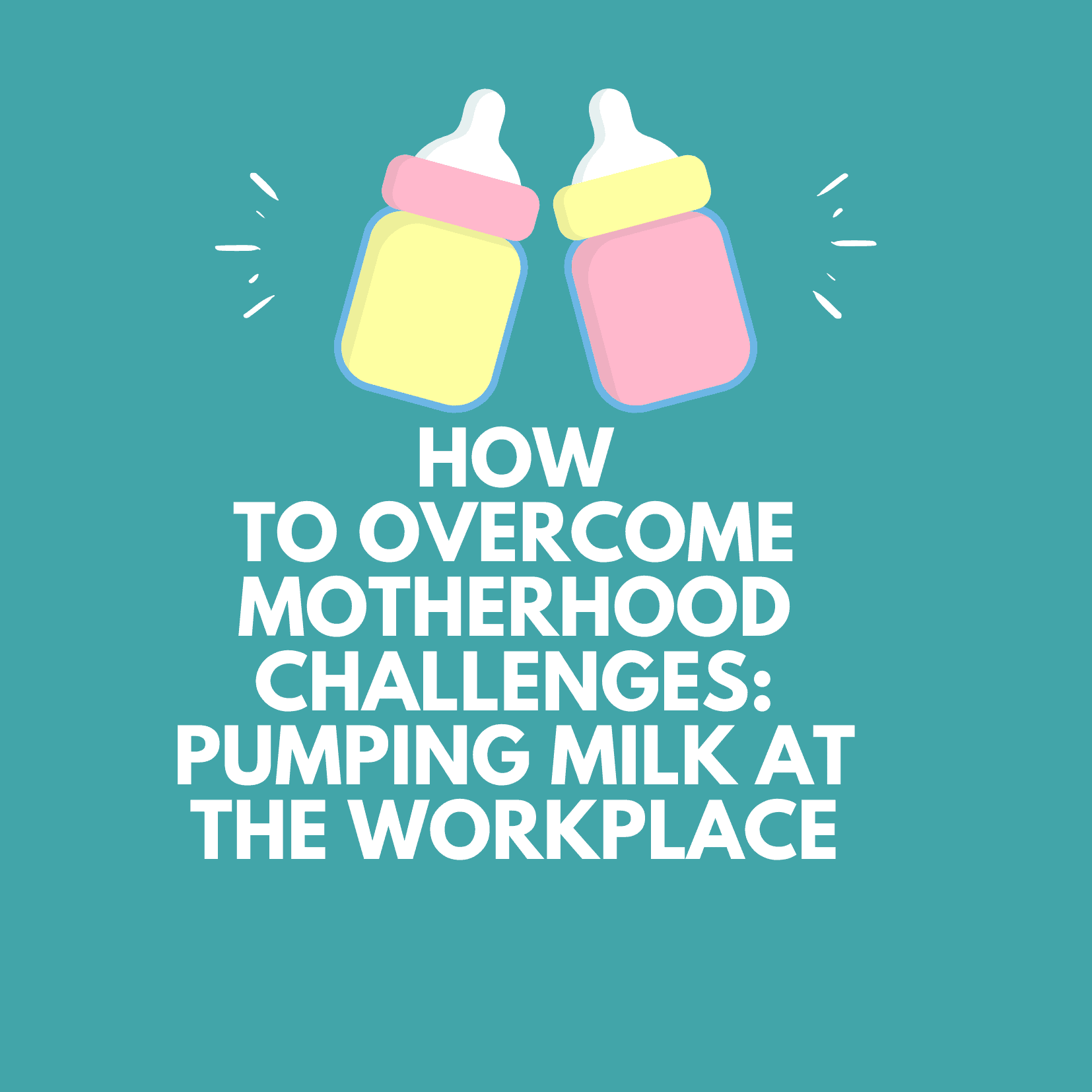Exclusive pumping is when a other opts to only feed her baby with pumped breast milk through a bottle. In this case, the baby is fed on pumped milk exclusively without direct breastfeeding.
Why Exclusive Pumping is Necessary
While it is recommended that moms should directly breastfeed their babies exclusively for six months, it may not be possible or practical in some situations. This is especially so when the mom spends some significant amount of time away from the baby particularly those working full-time.
1. You can Feed Baby from the Bottle
For babies with latching problems exclusive pumping allows them to feed on breast milk from the bottle. Also, other people around the mom can participate in feeding the baby through the bottle. This includes your partner, your primary caregiver, family members, and even your friends.
2. Offers all Health Benefits of Breast Milk
Exclusive pumping allows the baby to enjoy all the benefits of breast milk while the mother can continue working.
3. Allows Mother to Track Feeding
Exclusive pumping allows working moms to easily track how much the baby is feeding as compared to when you are breastfeeding as tracking the feeding volume is hard.

How to Make Exclusive Pumping Fast , Comfortable & Easy
1. Experiment and Establish a Convenient Pumping Schedule
If you are going to exclusively pump milk for your baby, you need an adequate stock of pumped milk. To achieve this, you need to keep up a good supply of pumped milk every day. The most effective way to achieve this is pumping on a schedule, as it will make your exclusive pumping easier and effortless.
To develop a schedule, you need to consider your work shift, break times, and your baby feeding needs. The goal is to make the schedule most practical and efficient for you while meeting the feeding needs of your baby at the same time. Create different schedules and experiment on each to find the most practical, efficient and productive in terms of pumped milk volume.
Your schedule should include
- The time you are pumping
- Intervals between each session
- Time for each session
- Number of sessions per day
- Expected volume per pumping session
On average working, moms need to pump from 8-10 times in a day (24 hour period). The frequency is important for particularly working moms as the baby is not getting any direct nursing from the breasts.
Read: How to Increase your Pumping Volume while Pumping from Work
2. Prioritize Optimal Breast Care
The breast can become sore and become painful from exclusive pumping, more so during the first few weeks/month when you start pumping. As a result, pumping can become too painful and uncomfortable.
A painful/uncomfortable pumping can affect your output. You will find that your milk letdown starts reducing affecting your volume output per session. Further it can cause more breast problems leading to infections.
You should aim to make your exclusive pumping as comfortable as possible through proper breast care such as;
- Use a lubricant to reduce friction on the breast and eliminate pain. Choose a lubricant depending on your preferences such as ease of spread, kind of smell, and cost among others.
- Choose the right flange size for your breast pump.
- Pump in the right posture. Some workplaces offer lactation rooms where moms can pump in comfort and right posture.
- Massage your breast during pumping to help reduce pain.

3. Use the Right Tools/Pump
Having the right tools such as a breast pump for pumping makes a huge difference. It is important to go for items that are helping you become more effective and comfortable in exclusive pumping. Not all recommended items work well for all moms so it is very important to find one that works well for you.
For pumps, there are both manual and electric pumps with varying effectiveness. Go for a battery-powered pump that you can use in places without a power outlet especially you are mostly on the move or drive a lot.
5. Get Adequate & Convenient Storage
As working mom on exclusive pumping, you are going to do a lot of pumping, to/from the office and at the office. You, therefore, need a cold storage option for your pumped milk to avoid the milk from spoiling. Some workplaces have refrigerators/freezers in their lactation rooms where you can store your milk until it is ready for transfer to your home freezer.
Alternatively, you can buy a portable cold storage box for keeping your pumped milk at the workplace. A portable cold storage box is handy as it does not restrict you when and where to pump; even allowing pumping out of office.
6. Keep your Pumping Items Clean
Your pumping items will need to be kept clean and free of germs. Typically it is recommended to wash your pumping items after every use. If you pump fro the office you can use the following options;
- Clean your items from the office sink after every use. Ensure you include all your washing supplies in your pumping bag.
- Sterilize using tablets
- Keep your items in cold storage to keep them sterile for the next pumping session
- Use sterilizing wipes designed specifically for pumping tools
- Buy multiple sets of each item you need so that you have a clean setup for every session without washing.
Note that you will however need to thoroughly wash all your items in the evening back at home for use the next day.
Pro Tips to Increase Milk Volume on Exclusive Pumping
- Don’t dwell too much on the time you spend on every session but rather on the volume. Typically an average of 15-20 minutes per pumping session is both effective and practical.
- A stress-free mental state is important in maintaining a steady volume. Always be relaxed as you pump to help your milk flow so that you can pump more.
- Identify your milk trigger to boost your outlet. For instance thoughts and memories of your baby can help you in your pumping. If allowed keep a photo of your baby on your lactation desk. Other moms have found that a recording of their baby’s hunger cry helps them in having a heavy letdown. For others, it helps to have baby items such as a piece of clothing to smell on at the office.
- Eliminate all pain points so that you can produce more. Start suction at a lighter setting and increase as needed.
- Start storing milk as soon as possible during your maternity leave to build up a milk supply. The big stack of pumped milk by the time you are returning to work will make exclusively pumping more manageable when you return to work. Ensure you mark the date of the pumped milk on the storage bag/bottle.
- If possible pump while driving to increase your pumping frequency and the volume. Get the right pump, bottle, and hands-free bra and use this opportunity to pump more, especially if you are on the move a lot.
- Have everything you need in your pumping bag as forgetting or misplacing parts can compromise your pumping output. Keep a pumping station set up at your workplace/car if you travel a lot that includes everything you need from the pump, hands-free bra, drink, bags, etc.
Related Articles
Practical Pumping Spots at Work/Office



